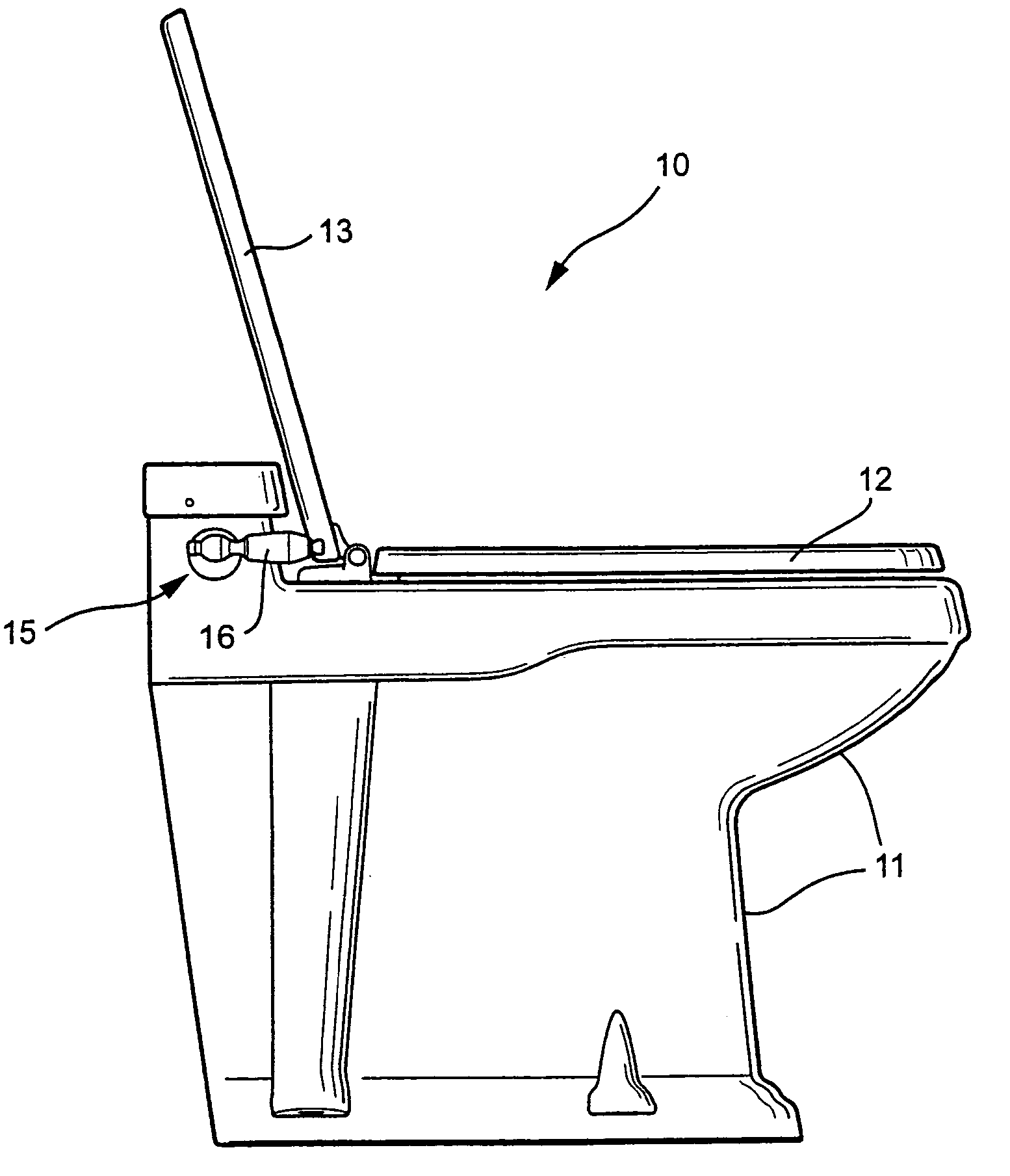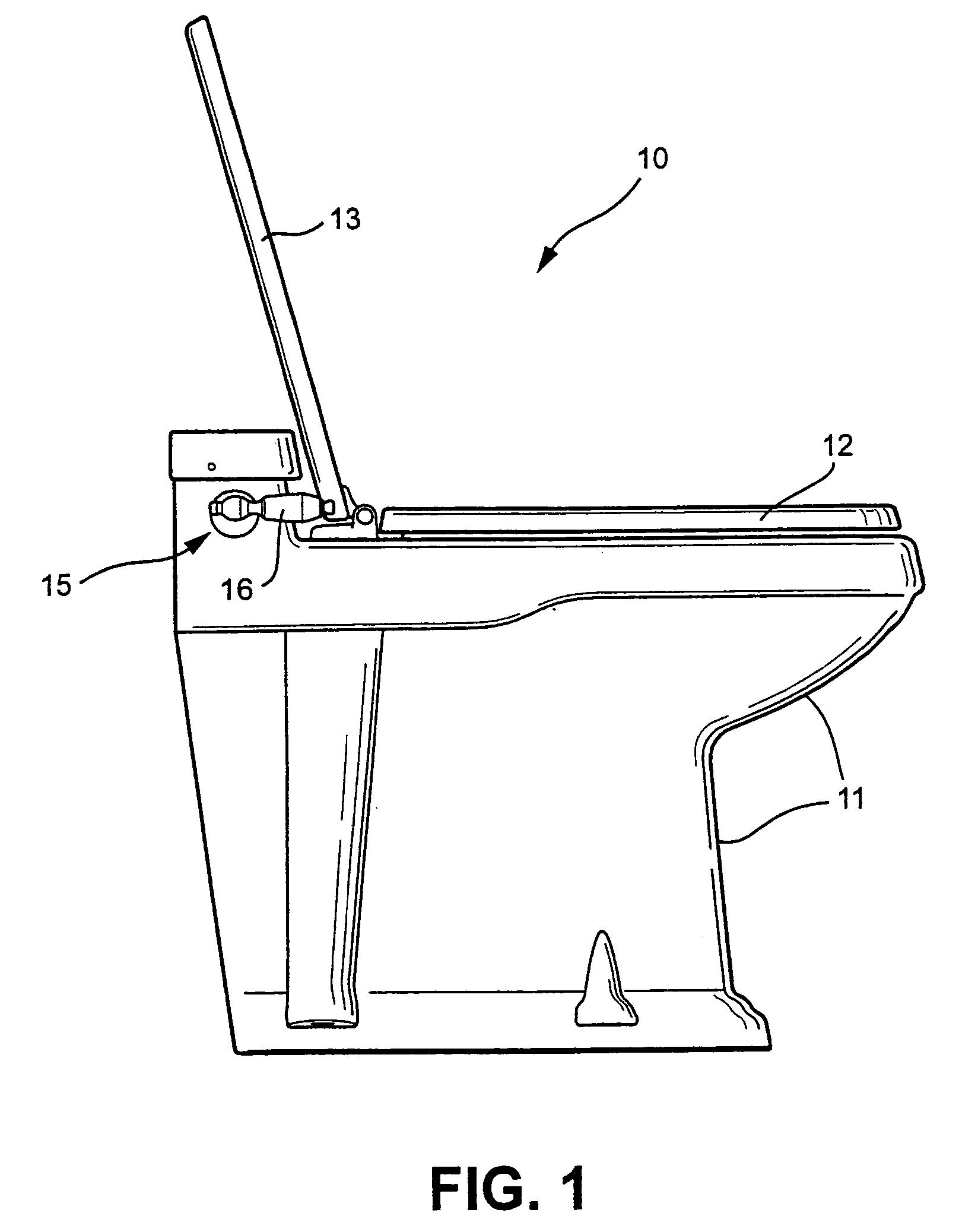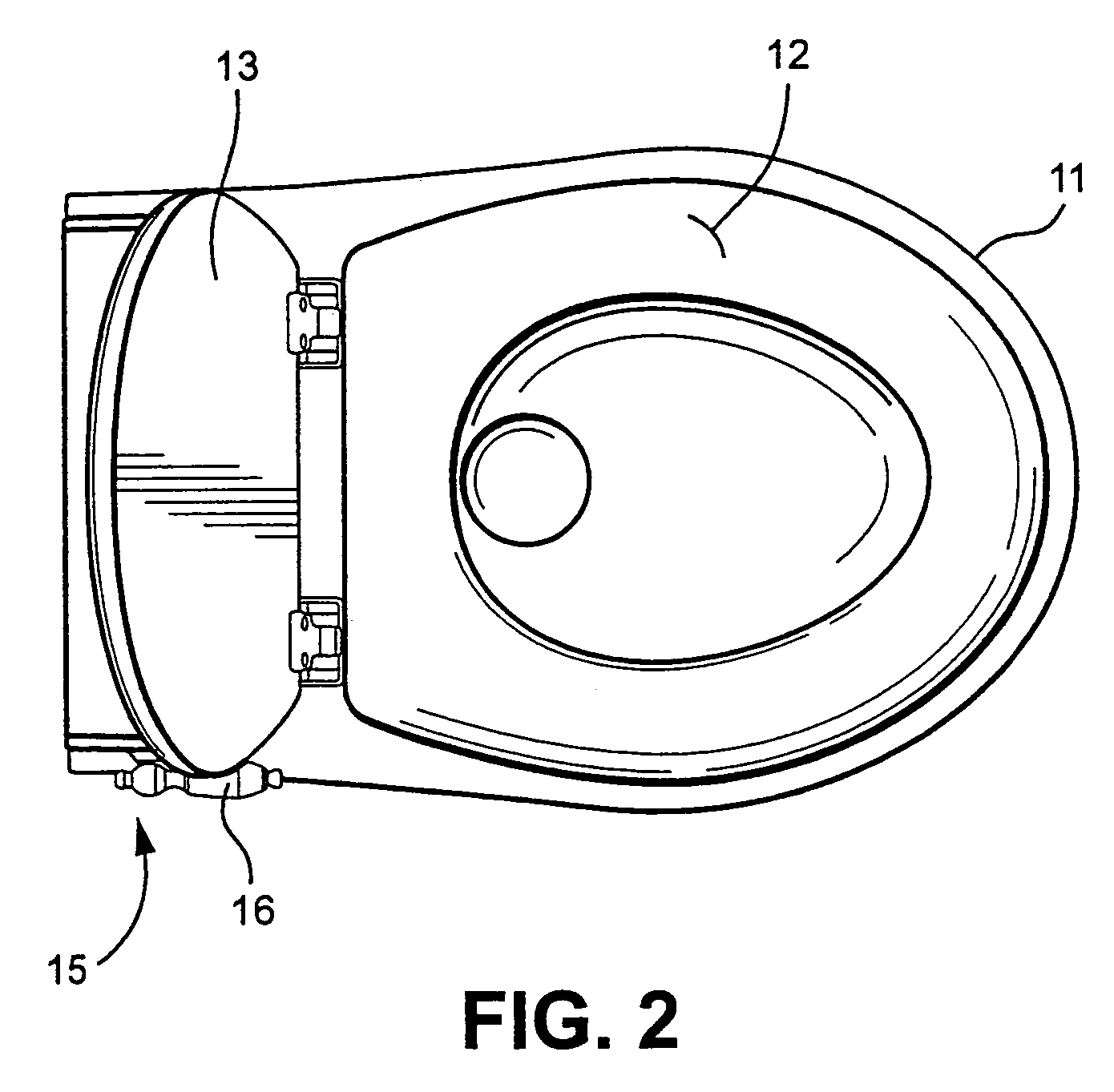Toilet and method of operation
a technology of toilets and toilets, applied in the field of toilets, can solve the problems of increasing the amount of vacuum used, and increasing the possibility of system plugging, so as to improve the quality of flushing
- Summary
- Abstract
- Description
- Claims
- Application Information
AI Technical Summary
Benefits of technology
Problems solved by technology
Method used
Image
Examples
Embodiment Construction
[0028]FIGS. 1–3 show an exemplary toilet 10 (either vacuum or drop through) according to the invention having a substantially all china one-piece combination bowl and base 11, with a conventional toilet seat 12 and cover 13 associated therewith. In exterior appearance, the toilet 10 generally resembles conventional toilets found in homes, businesses and the like. The toilet 10 includes a flush lever assembly 15 associated therewith incorporating an actuating lever 16. An exemplary form of the flush lever assembly 15 is shown in more detail in FIG. 4.
[0029]The flush lever assembly 15 includes a shaft that may be rotated in either clockwise (flush) or counterclockwise (add water) directions about an axis (e.g., a substantially horizontal axis) by manipulating the actuating lever 16 to activate components mounted in the housing 19. In an exemplary embodiment, an electrical switch is mounted at one end of the housing 19 and is actuated to close “add water” contacts or “flush” contacts d...
PUM
 Login to View More
Login to View More Abstract
Description
Claims
Application Information
 Login to View More
Login to View More - R&D
- Intellectual Property
- Life Sciences
- Materials
- Tech Scout
- Unparalleled Data Quality
- Higher Quality Content
- 60% Fewer Hallucinations
Browse by: Latest US Patents, China's latest patents, Technical Efficacy Thesaurus, Application Domain, Technology Topic, Popular Technical Reports.
© 2025 PatSnap. All rights reserved.Legal|Privacy policy|Modern Slavery Act Transparency Statement|Sitemap|About US| Contact US: help@patsnap.com



